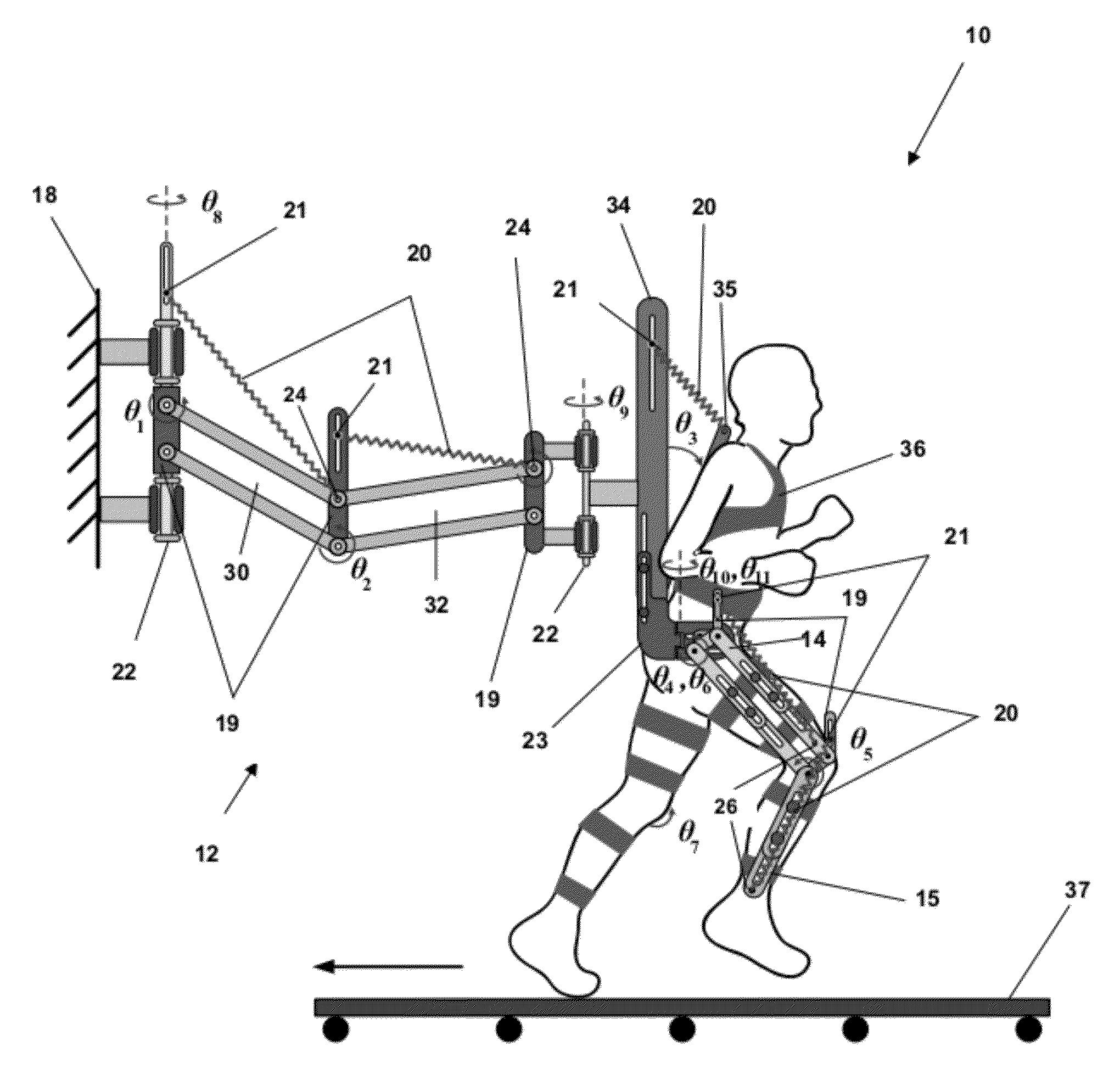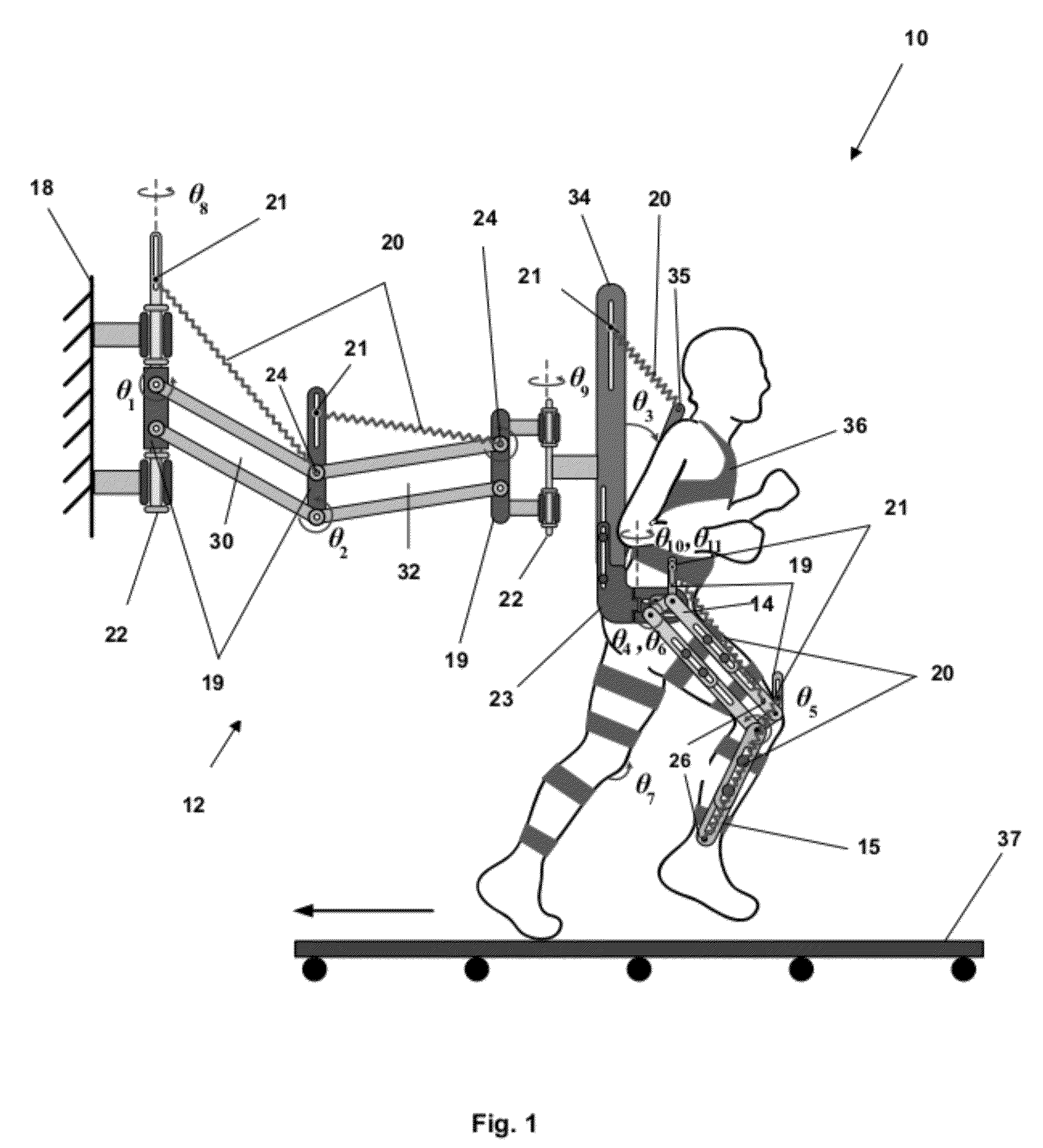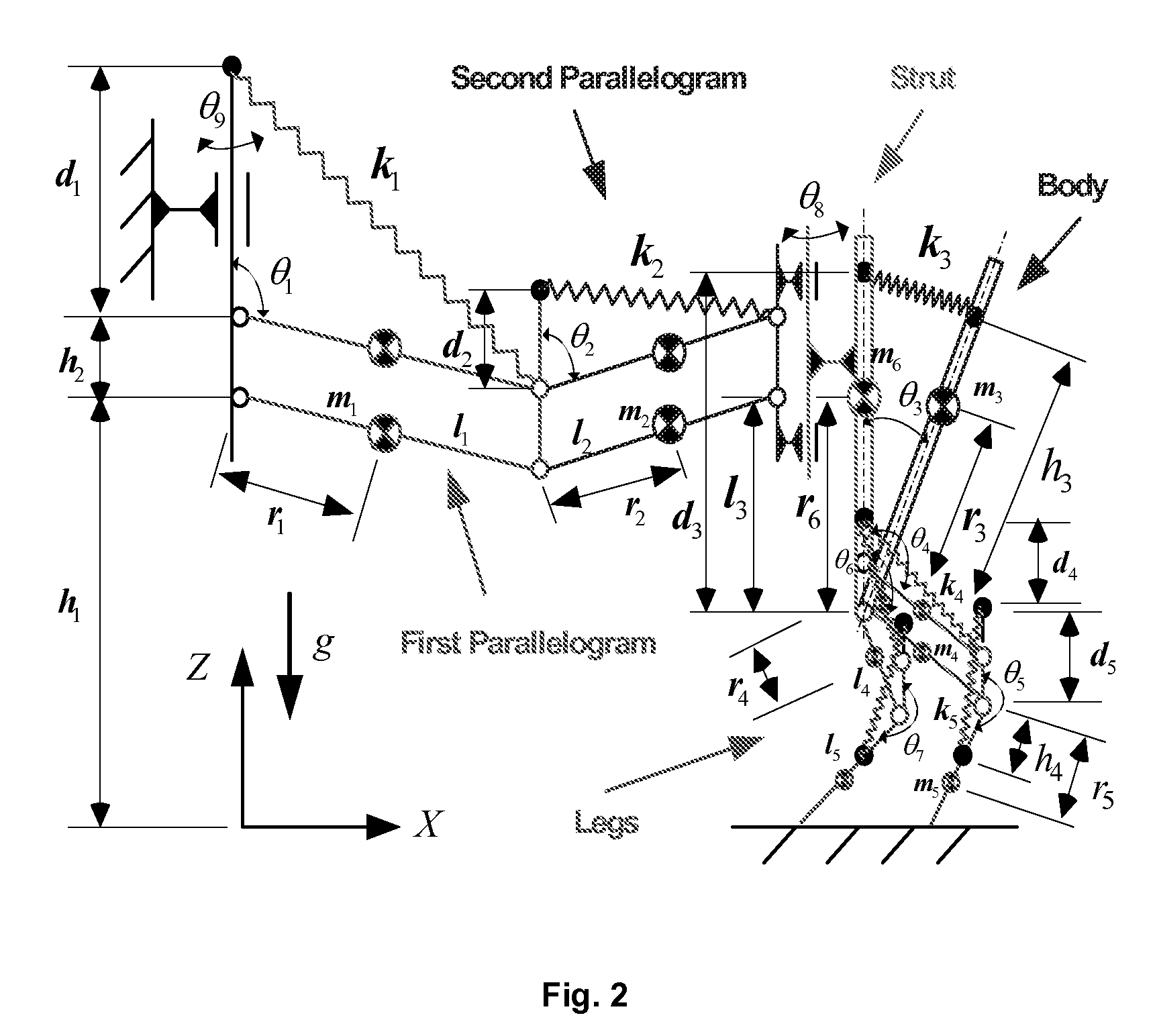Apparatus and method for reduced-gravity simulation
a technology of reduced gravity and apparatus, applied in the field of gravity-balanced passive apparatus, can solve the problems of large inertia force, unsuitability for some applications, and significant impact of training technology and facility on the quality, cost and time of required training, and achieve the effect of reducing gravity
- Summary
- Abstract
- Description
- Claims
- Application Information
AI Technical Summary
Benefits of technology
Problems solved by technology
Method used
Image
Examples
example 1
[0090]A non-limiting example of a system which vertically adjusts the spring attachment points A1, A2, . . . , and A5 (as illustrated in FIG. 2) based on the mass of the person on the apparatus follows. The adjustment is based on the calculations given in equations (11). It is preferable to mechanically make a spring's attachment points adjustable.
[0091]d1=2m1r1+l1(2m2+ma)l1k1gd2=2m2r2+l2mal2k2gd3=m3r3h3k3gd4=m4r4+m5l4l4k4gd5=m5r5h4k5g(11)
example 2
[0092]A non-limiting example of a system of an embodiment of the present inventions for the conditions given in equations (10) and (11) was based on the assumption that all the gravity forces were balanced. The resulting apparatus was used for simulating zero-G scenarios. For planetary exploration, to simulate a reduced-G scenario as opposed to the zero-G case, there is a partial gravity balancing, done by replacing the gravity acceleration term g in equations (10) and (11) with the term ρg where ρ is a parameter that represents the ratio (or percentage) of the Earth gravity to be balanced.
example 3
[0093]A non-limiting example of a system to simulate walking on the Moon surface where the gravity is only ⅙ of the Earth gravity, has a corresponding ρ set to the following.
[0094]ρ=(1-16)=56(12)
PUM
 Login to View More
Login to View More Abstract
Description
Claims
Application Information
 Login to View More
Login to View More - R&D
- Intellectual Property
- Life Sciences
- Materials
- Tech Scout
- Unparalleled Data Quality
- Higher Quality Content
- 60% Fewer Hallucinations
Browse by: Latest US Patents, China's latest patents, Technical Efficacy Thesaurus, Application Domain, Technology Topic, Popular Technical Reports.
© 2025 PatSnap. All rights reserved.Legal|Privacy policy|Modern Slavery Act Transparency Statement|Sitemap|About US| Contact US: help@patsnap.com



